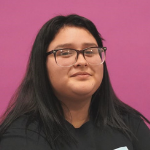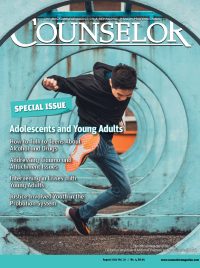Share
When people are asked to describe substance use prevention, most (including youth), define it as telling someone not to do drugs and not to drink alcohol. For years, our youth have been drilled with the message that it is up to them and them alone not to succumb to the temptation of alcohol and substance use. What we eventually learned through research and data collection of underage drinking and substance use rates, was that this messaging alone was not enough to convince youth not to engage in underage drinking or use of other substances. When prevention evolved to include knowledge of the harmful impacts of substance use, there was a small decline, but usage rates among youth primarily stayed the same. Even when shown horrific photos of the impacts of substance use on the human body and car crashes as a result of drinking and driving, youth usage rates prior to 2002 for the most part remained the same (Fresno City Clerk, 2019).
According to the 2017 National Survey on Drug Use and Health (NSDUH), about two out of three individuals aged twelve or older perceived great risk from having four or five drinks of alcohol nearly every day (SAMHSA, 2018). What this tells us is that youth understand that alcohol consumption is harmful, but this knowledge alone does not deter them from engaging in use. This same survey found that 7.4 million people aged twelve to twenty drank alcohol in the past month, including 4.5 million who were binge drinkers and 932,000 who were heavy drinkers. What was interesting, however, was that the percentage of youth who reported they consumed alcohol in 2017 was lower than the percentages in 2002 through 2014 (SAMHSA, 2018).
What could be contributing to this recent small, but steady decline? What changed?
There has been a small, but progressive movement of youth in California who have challenged themselves to address this issue. Youth, in their innovative wisdom, have decided to take a different approach to looking at the issue of substance use in their population. Recognizing that previous and current methods of changing the attitudes and behaviors of their peers has not made much of an impact, they have decided to look at this issue from a community and environmental approach. Looking beyond just self-motivational messaging and knowledge of harm, the conversation regarding prevention has changed from reasons youth should not drink alcohol to the factors that contribute to youth use. Youth around the state of California are starting to look at their communities and at the environments around youth that are contributing to alcohol use. Prevention efforts have evolved to look at access, media messaging, policies, and social norms as well as the role these things play in youth attitudes and beliefs around alcohol.
According to the National Institute on Alcohol Abuse and Alcoholism (NIAAA), among twelve- to fourteen-year-olds who reported that they drank alcohol in the past month, 95.1 percent reported that they got it for free the last time they drank (NIAAA, 2006). In many cases, adolescents have access to alcohol through family members or find it at home. This data highlights a contributing factor to underage drinking that communities have struggled with for years: accessibility. Youth leaders realized that if you limit access to youth, you limit consumption. The solution was clear: access to alcohol needs to be addressed, and the focus needs to be on those known to provide alcohol to youth in the community. What the data also provided were clear groups that needed to be targeted.
Youth, in their innovative wisdom, have decided to take a different approach to looking at the issue of substance use in their population.
Looking at the examples and strategies used in tobacco prevention efforts, youth have been developing projects and campaigns that have focused on reducing access. Through training and skill development, youth have been building their capacity to lead community change campaigns that focus on youth alcohol access reduction. Youth development programs like the Youth Leadership Institute (YLI) and California Friday Night Live (FNL) are training youth in advocacy, public speaking, data collection, project planning, and youth and adult partnerships to empower youth. One example of this is the Responsible Neighborhood Market Act (RNMA). In 2018, the city council of Fresno partnered with youth to pass the RNMA, which initiated the implementation of a local policy that would place a cap on the amount of liquor licenses that can be distributed within the city (Fresno City Clerk, 2020). The policy would also increase the distance that liquor stores must be from youth-sensitive spaces.
In 2018, the California FNL program launched a statewide campaign referred to as the “Not On My Watch Lawn Sign Campaign” (Ortiz-Briones, 2018). This campaign provided families with a family alcohol policy they could implement in their household and a lawn sign stating, “This home does not support underage drinking and does not supply alcohol to minors.” Youth in Fresno followed the message with a data point stating that “66 percent of Fresno County youth who reported they drink alcohol got it from a parent or adult family members.” Between 2017 and 2018, the Placer County Youth Commission passed a Social Host Ordinance in their county and in the city of Roseville (Baksh, 2015). This policy aimed to prevent parent-hosted alcohol parties and the serving of alcohol to youth within the home. The Social Host Ordinance instituted fines to adults who provided alcohol to youth in their homes and youth who were not their own children. In 2016, youth in Oceanside, California led a “sticker shock” campaign, which included placing bright yellow stickers on alcohol twelve-packs and greater. These stickers informed buyers of the consequences of providing alcohol to minors. This campaign inspired other youth in California to do the same in their own counties.
These and many other examples are already contributing to declining rates of underage drinking. By investing in youth development and substance use prevention programs that focus on community change rather than just education, we will continue to see this downward trend. In California, the current budget allocates less than 20 percent to address prevention and early intervention substance abuse services (DHCS, 2020). With youth driving and leading community change that is already showing great impact, it is not hard to imagine what can be accomplished if this new wave of prevention is provided an even larger investment.
References
- Baksh, M. (2015). Roseville passes fines for hosts of underage drinkers. The Sacramento Bee. Retrieved from https://www.sacbee.com/news/local/article33749919.html
- California Department of Health Care Services (DHCS). (2020). Mental health services act expenditure report – Governor’s budget: Fiscal year 2020–21. Retrieved from https://www.dhcs.ca.gov/formsandpubs/Documents/Legislative% 20Reports/MHSA-ExpenditureReportFY20-21.pdf
- Fresno City Clerk. (2019). ‘Item 19-1631: Responsible neighborhood market act.’ In Minutes of Fresno city council meeting 1 May 2019. City of Fresno: Fresno, California. https://fresno.legistar.com/View.ashx?M=M&ID= 691563&GUID=2870B865-43C7-4E11-A38E-9B712630E01B
- Fresno City Clerk. (2020). ‘Item 20-0011363: Responsible neighborhood market act.’ In Minutes of Fresno city council meeting 15 October 2020. City of Fresno: Fresno, California. https://fresno.legistar.com/View.ashx?M=M&ID =749719&GUID=A783655D-56D2-402F-AF45-E30C12D197D8
- National Institute on Alcohol Abuse and Alcoholism (NIAAA). (2006). Underage drinking: Why do adolescents drink, what are the risks, and how can underage drinking be prevented? Alcohol Alert, 67. Retrieved from https://pubs.niaaa.nih.gov/publications/AA67/AA67.htm
- Ortiz-Briones, M. G. (2018). Fresno students launch ‘not on my watch campaign’ aimed to reduce underage access to alcohol. Vida En El Valle. Retrieved from https://www.vidaenelvalle.com/news/state/california/fresno/article220981415.html
- Substance Abuse and Mental Health Services Administration (SAMHSA). (2018). Key substance use and mental health indicators in the United States: Results from the 2017 National survey on drug use and health. Retrieved from https://www.samhsa.gov/data/sites/default/files/cbhsq-reports/NSDUHFFR2017/NSDUHFFR2017.pdf

Nicole Lee
Nicole Lee is a senior at Roosevelt High School. She has been a part of the Roosevelt High School Friday Night Live (FNL) chapter and Youth Advocacy Leadership League (YALL) since January 2017. She was vice president of the Roosevelt FNL chapter from 2018 to 2019, served as chapter president from 2019 to 2020, and served on the California Youth Council (CYC) from 2019 to 2020. Lee was also one of the youth speakers for the Take Back the Billboards campaign press conference, which partnered with city council members on passing a Responsible Neighborhood Market Ordinance (RNMO) to put a cap on liquor licenses in the City of Fresno.

Christina Garcia
Christina Garcia is a senior at Roosevelt High School. She has been a part of the Roosevelt High School Friday Night Live (FNL) chapter and Youth Advocacy Leadership League (YALL) since January 2017. Garcia was president of the Roosevelt FNL chapter from 2018 to 2019 and served as chapter vice president from 2019 to 2020. She was also one of the youth speakers for the Take Back the Billboards campaign press conference, which partnered with city council members on passing a Responsible Neighborhood Market Ordinance (RNMO) to put a cap on liquor licenses in the City of Fresno.

Cynthia Rocha
Cynthia Rocha has been with the Youth Leadership Institute (YLI) since 2009 and is senior director in the Central Valley. She has been involved in youth leadership development since high school and continued that passion throughout her college career, mentoring young women in high school, as well as working with the Stockton Jacoby Center for Community Developm









 Counselor Magazine is the official publication of the California Association of Addiction Programs and Professionals (CCAPP). Counselor offers online continuing education, article archives, subscription deals, and article submission guidelines. It has been serving the addiction field for more than thirty years.
Counselor Magazine is the official publication of the California Association of Addiction Programs and Professionals (CCAPP). Counselor offers online continuing education, article archives, subscription deals, and article submission guidelines. It has been serving the addiction field for more than thirty years.